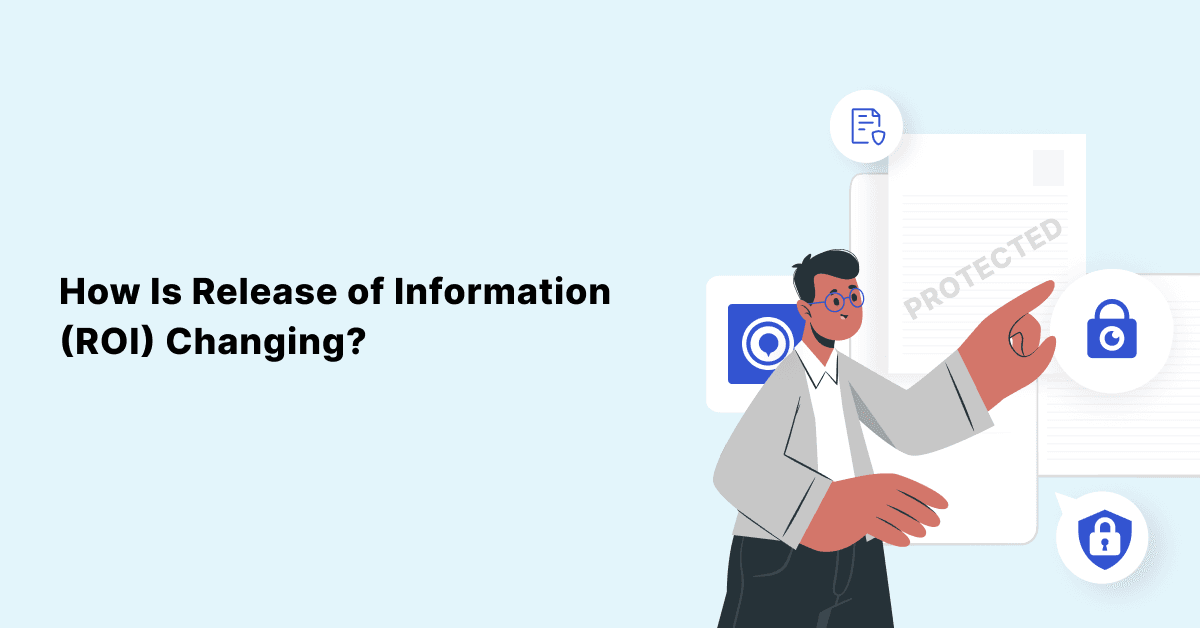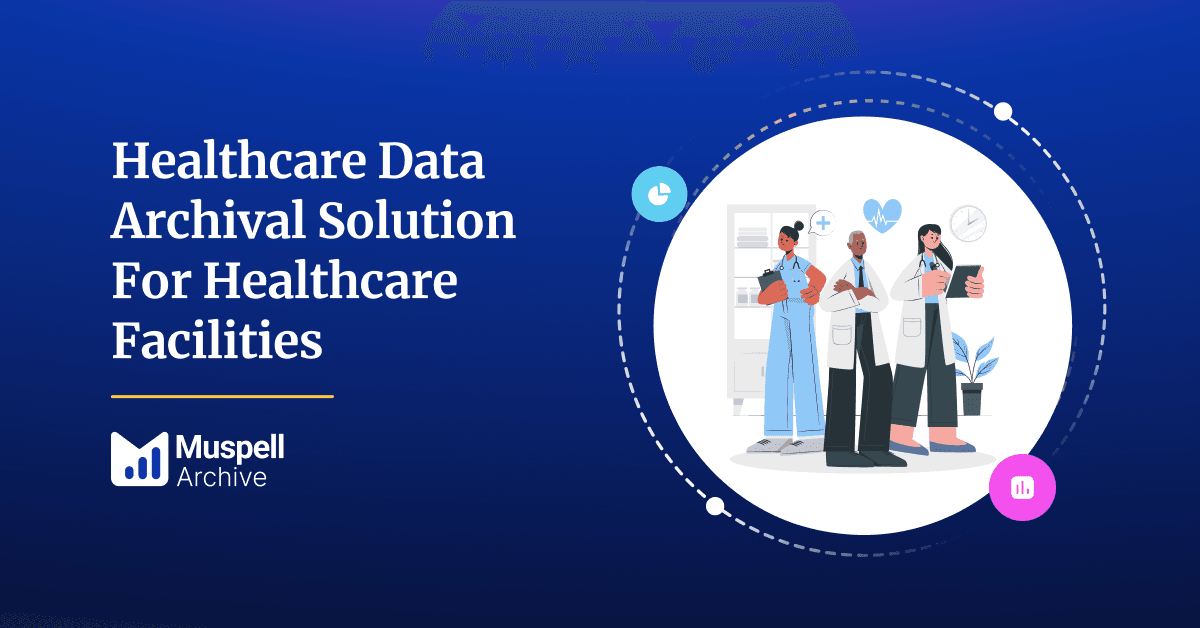
How Is Release of Information (ROI) Changing?
Are you curious about the changes happening in healthcare’s Release of Information (ROI) process?
Gone are the …

As organizations adopt EHR and mature in data digitization, the reporting needs and complexity grow exponentially. Healthcare organizations must manage data from multiple Electronic Health Records (EHRs), ancillary systems, clinical trials, health surveys, administrative, clearing houses, etc. With so much data at disposal, reporting requests come in varying gradients of forms and complexity. Over time the reporting inventory becomes convoluted, unmanageable, and redundant. It also undermines the quality and definition of metrics. Organizations end up with multiple reconciliations and a truckload of reports, the value of which is quite questionable.
How to beat the burden of overflowing reports and get the best out of them, you may wonder.
Report rationalization could just be the answer you need.
Report rationalization is a cost-effective project that doesn’t just migrate reports between systems but builds blocks for better data understanding, simplifies the reporting support footprint, and ensures that data derived from reports produces greater value.
In this blog post, you’ll learn about:
In any health system, you can be assured that each day requires providers to go through a pool of data and information ranging from patient-specific clinical and administrative information to clinical administrative data. There are also many other statistics that a hospital is expected to report, like census statistics, discharge statistics, etc. This certainly would give you an idea of the difficulty a medical practice would encounter while managing the reporting process.
With an understanding of the voluminous reporting requirements that healthcare requires, let’s take a look at the problems with the current reporting framework:
One of the most pressing issues facing healthcare organizations today is the problem of redundant reports. With the ever-increasing volume of data being generated by Electronic Health Records, many clinicians are buried under a mountain of reports that often contain duplicate or triplicate information. This redundancy not only leads to inefficiency and waste but can also obscure critical information that could be vital to patient care.
Report rationalization reduces the number of reports, streamlines healthcare operations, and improves patient care because it enables clinicians to easily identify relevant information and take action accordingly.
Duplicative code is yet another challenge that comes in the way of healthcare reporting. When the same code is used multiple times in different reports, it creates confusion. This can lead to errors and inefficiencies, and it can be extremely frustrating for clinicians who have to deal with the reports on a daily basis.
Lack of coding consistency in reports creates a number of problems for health systems. First, it leads to duplicate records and inefficient data collection. Second, it makes it difficult to compare data across different reports. Finally, it can result in inaccurate billing.
Report rationalization is a process of standardizing coding so that all reports are consistent with each other. This would improve the efficiency of data collection and make it easier to compare data across different reports. In addition, report rationalization would reduce the risk of medical errors and increase accuracy in billing.
In order to make reporting simple, the code used for it must be reusable. However, in most cases, there is no reusable logic that is consistent with standard definitions, which thereby increases the reporting difficulties and makes the present framework flawed, stressing the immediate need for report rationalization.
Apart from these, there are a ton of other problems with the present reporting framework, such as the use of multiple tools, which again bring about inconsistencies; the presence of outdated reports owing to the lack of a proper monitoring process; the existence of a huge chunk reports with a questionable value that leads to high maintenance costs and low usability.
Taking up report rationalization could prove to be useful for your health system in the following ways:
Apart from this, there are so many other ways in which report rationalization could benefit your organization. In short, it could be a great way to increase reporting agility by better supporting reporting requirements.
Epic has been using SAP Business Object’s Crystal report as the primary tool for reporting out of Clarity. With Epic-Crystal integration, reports are scheduled and delivered on Hyperspace for providers to consume. Epic has also built and supported off-the-shelf complex, graphical and detailed Crystal Reports.
Currently, with the move to HyperDrive, Epic seems to be deprecating support for Crystal Reports. Cogito SQL is being promoted in place of ECI. There are no new off-the-shelf Crystal-based Reports, and very soon, they are expected to go ahead and stop supporting the existing ones.
As Epic’s support for Crystal reports sunsets, Hospital systems on Epic are now looking for other BI solutions.
Read more about BI for healthcare here.
While this may seem daunting initially, it is good to look at it as an excellent opportunity for healthcare organizations to review their existing reporting inventory and make necessary rationalizations.
Here’s an easy and efficient 314e recommended process to follow for report rationalization.
The best way to begin with report rationalization is to start from the core. The first thing you must do is investigate and review the existing inventory. This will allow the categorization of existing reports based on domains, complexity, frequency, schedule, disposition, etc.
Once that is done, you must meet with the stakeholders and report owners to ideally gauge the criticality; this is crucial because they best understand the value of a particular report. The discussion must be centered around the report categorization and objective and should primarily revolve around the report type, i.e., regulatory, compliance, registry, downstream, etc.
By the end of this phase, you should be armed with a categorization catalog sorted by “absolute must” to “good to have”, to “not needed”.
The next step to move towards is the process of elimination. Typically begin by looking at the percentage of reports that can be discarded. Outdated, duplicate, redundant, and high-maintenance reports that no longer add value to the organization but are still in the inventory are good places to start. These are the low-hanging on your list, and their disposal wouldn’t cause disruption.
The next thing to do should be to focus on migrating the lights-on extracts. These typically are the highly leveraged, data-heavy, minimum formatting reports which are used on a daily or regular frequency. Considering the high usage, priority, and downtime, the risk should be kept minimal here; hence taking the help of a tool like SSRS would prove to be extremely useful. The main reason behind this choice is that SQL queries from Crystal to SSRS can be migrated without a lot of disruption.
After paying attention to lights-on extracts, you can identify and categorize domain-specific reports like Imaging, Pharmacy, ED, Cardiology, etc. This can help your health system in two ways:
Most domains have a few well-defined workflows; hence the data is contained in a small number of tables. You can create domain-specific data aggregation tables or datamarts. While you may find this to be a little arduous initially, if you put in the effort to secure coordination across teams, this could become one of the most beneficial tasks ever performed.
It can be useful to your health system in the following ways:
Finally, we recommend promoting self-service by enabling select users to create reports, answer queries, and visualize data on their own. If your data is in the cloud, self-service is further simplified. Be it AWS or Azure, all of them provide an easy interface to query and visualize data. Almost all cloud services have NLP modules, allowing greater freedom for the researchers, providers, and coders to scrub through notes to identify additional details that could aid in patient care or revenue generation.
There is no shortcut to this process, but organizations can still cut a few steps short to better the timeline. Before embarking on the rationalization path, they need to have a set objective, decide on the extent of rationalization and pick the trade-off they are willing to make.
Here’s a list of things that need to be factored in:
Find a fine balance between state-of-art technical solutions and budgetary considerations for implementation, licensing cost, training, maintenance, etc. This will help you set out a clear direction for the path forward.
Make sure that alongside the dedicated team, you have also secured involvement from major stakeholders like the providers, vendors, DBAs, etc. A communication plan, accompanied by an impact study, will come in handy here.
Fix up a timeline for the entire rationalization project and make sure to stick to every detail of it. The timeline directly correlates with the budget and is the most sensitive element, which could jeopardize the entire plan if not tracked minutely.
Ensure that in this entire process, all throughout re-inventing or modernizing, the end-users are kept in mind. The technology stack, specifically the front end, should be easy to use and adaptive for them.
Choose the right partner because that is of paramount importance here. The term ‘partner’ has intentionally been used here in place of ‘vendor,’ bearing in mind that you are going to be working with someone who needs to be involved in literally every aspect and step. Careful consideration should be given to picking the right partner because they are going to have access to sensitive information, and one wrong step could affect the healthcare organization a lot. This is the one step our clients ensured to follow before choosing us for report rationalization.
The right partner would also ensure proper data migration and help tackle the 10 biggest challenges in EHR data migration.
314e can assist with the whole process, from planning and organizing the work to execution. We can help you with the selection of next-generation BI tools as well as executing the rationalization/migration end-end.
The 314e team has the experience and knowledge of a bunch of different tools (other than, of course, the Epic stack). These include:
We also have worked extensively on migrating data from on-prem to the cloud. Click here to see how we helped a Mid-west non-profit organization in migrating legacy applications, databases, and health records.
Join over 3,200 subscribers and keep up-to-date with the latest innovations & best practices in Healthcare IT.

Are you curious about the changes happening in healthcare’s Release of Information (ROI) process?
Gone are the …

Our world has changed. (How’s that for an understatement?) We’re collectively watching and waiting as the …

Healthcare data archival and EHR data migration present healthcare organizations with substantial …